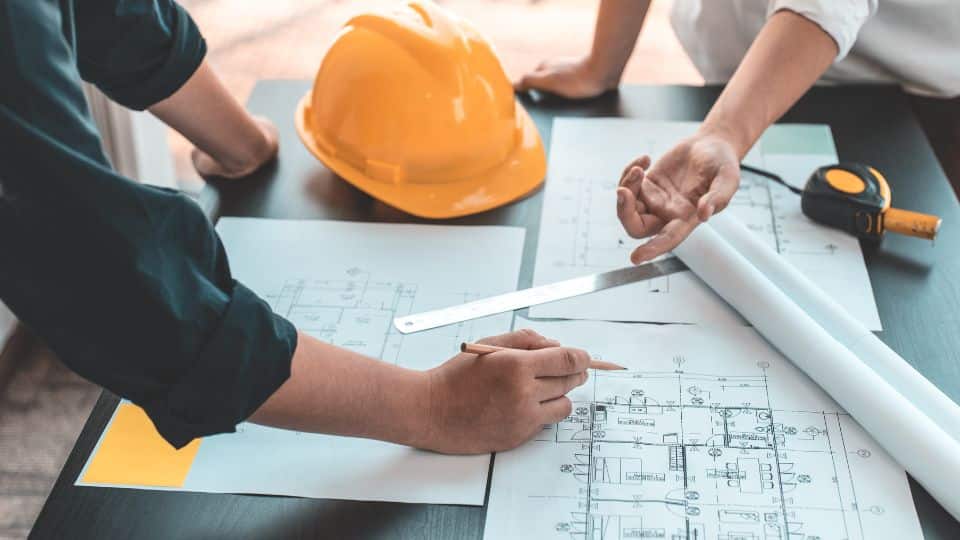Architect Interview Questions You Should Be Prepared to Answer
Architect Interview Questions You Should Be Prepared to Answer
Blog Article
Recognizing the Diverse Career Paths Available for Aspiring Architect
As a hopeful Architect, you have a world of occupation courses waiting for you. Each path uses unique obstacles and possibilities to apply your imagination and technological knowledge. Whether you're attracted to conventional architecture or the subtleties of sustainable design, there's a specific niche that lines up with your interests. Recognizing these varied options can form your professional journey, however which instructions will you choose to discover first?
Typical Style: Creating Structures and structures
Conventional architecture concentrates on creating buildings and frameworks that mix performance with aesthetic charm. As you discover this area, you'll value the detailed equilibrium between type and function. You'll discover to attract ideas from historic designs, integrating elements like proportion, materials, and craftsmanship. Your styles can show social heritage, showcasing regional traditions while meeting modern needs.
You'll create abilities in composing, model-making, and website evaluation, enabling you to imagine and communicate your ideas effectively. Engaging with customers, you'll need to comprehend their vision and convert it right into practical styles.
Furthermore, building codes and sustainability techniques are necessary in your work, guaranteeing your frameworks are risk-free and environmentally pleasant. As you expand in your profession, you'll find opportunities in household, commercial, or perhaps reconstruction tasks, each offering unique challenges. Embracing traditional design leads the method for a satisfying career that pays tribute to the past while shaping the future.
Urban Planning: Forming Communities and Public Spaces
As an ambitious Architect, you can play a necessary function as a city organizer, transforming how communities operate and engage. By utilizing area engagement strategies, you'll ensure that citizens have a voice in forming their setting. Plus, integrating sustainable design concepts will help create spaces that not only satisfy today's needs however also safeguard the future.
Function of Urban Planners
While numerous could think of engineers as the sole dreamers behind structures, metropolitan organizers play a crucial duty in forming the more comprehensive landscape of neighborhoods and public spaces. By working together with different stakeholders, you'll assist create parks, transport systems, and property areas that promote social interaction and availability. Your know-how in spatial layout and neighborhood dynamics enables you to imagine future growth while maintaining cultural heritage.
Area Involvement Methods
Reliable neighborhood engagement methods are crucial for metropolitan planners to guarantee that the voices of citizens are listened to and valued in the planning process. To promote meaningful discussion, you ought to focus on open discussion forums and workshops where area participants can share their ideas and issues. By actively incorporating and paying attention comments, you'll create rooms that reflect the community's needs, eventually leading to even more effective and sustainable urban environments.
Lasting Design Principles
When designing urban areas, integrating lasting style principles is vital for producing environments that grow both ecologically and socially. You ought to begin by concentrating on energy performance, making use of materials that decrease waste and advertise recycling. Take into consideration incorporating eco-friendly areas, like yards and parks, to boost biodiversity and improve air top quality. Advertising walkability and public transportation can reduce dependence on cars and trucks, promoting a much healthier neighborhood.
Designing with water conservation in mind is likewise vital-- think of rain gardens and permeable surface areas to manage stormwater. Entailing community members throughout the preparation procedure assurances that the spaces you develop satisfy their requirements and encourage social interaction. By embracing these principles, you'll add to vibrant, sustainable city landscapes that profit everyone.

Landscape Design: Developing Lasting Exterior Settings
As you explore landscape design, you'll discover essential layout principles that create attractive and practical outside rooms. Sustainable methods play an essential role in ensuring these environments grow while minimizing environmental effect. Plus, you'll locate a variety of profession chances that allow you to make an actual distinction in just how individuals connect with nature.
Layout Principles in Landscape
Comprehending design principles in landscape architecture is important for developing lasting exterior environments that integrate with nature. You'll need to consider aspects like scale, balance, and proportion to assure your designs really feel cohesive and inviting. Incorporating indigenous plants not just boosts biodiversity however additionally reduces water use, making your landscape resistant. Think of the flow of area and just how people connect with it; paths and seating areas should welcome expedition and leisure. In addition, pay attention to seasonal changes, designing with products that complement the surroundings year-round (Architect). By prioritizing sustainability and appearances, you can create outside spaces that enrich the community and promote well-being. Welcoming these concepts will set a solid structure for your job in landscape architecture.
Lasting Practices Review
Sustainable practices in landscape architecture not just concentrate on aesthetics however likewise focus on eco-friendly wellness and source conservation. You can design areas that promote soil health, such as making use of natural materials and exercising permaculture principles. Ultimately, these practices guarantee your layouts profit both people and the atmosphere for years to come.
Career Opportunities Expedition
With a solid structure in sustainable methods, landscape style offers a range of career courses that permit you to make a significant influence on the environment. You can work as a landscape developer, producing cosmetically pleasing and practical exterior spaces, or focus on environmental repair, aiding to revive damaged environments. Urban organizers usually work together with landscape architects to create green areas in urban setups, improving city livability. If you're passionate concerning education and learning, take into consideration coming to be a landscape design educator, motivating future generations. Additionally, you may function with nonprofits focused on ecological sustainability or participate in study to introduce brand-new practices. Each course not only forms beautiful settings but likewise promotes a healthier planet for future generations.
Lasting Style: Concentrating on Eco-Friendly Practices
As you explore your profession in style, embracing eco-friendly practices can establish you apart in an affordable area. Sustainable style concentrates on developing buildings that reduce ecological impact while improving passenger wellness. By including sustainable products, energy-efficient systems, and lasting building methods, you'll add to a greener future.
Begin by obtaining understanding of environment-friendly qualifications like LEED or BREEAM, which can strengthen your qualifications. Take into consideration how all-natural light, air flow, and thermal performance can enhance style. Work together with engineers and ecological experts to introduce solutions that minimize waste and preserve sources.
Do not forget the value of neighborhood participation-- engaging neighborhood stakeholders can inspire layouts that balance with the atmosphere. As clients increasingly focus on sustainability, your experience in environmentally friendly techniques will certainly not only bring in projects but also meet your passion for responsible architecture. Embrace this critical facet of the career, and see your occupation grow.
Historical Conservation: Protecting and Restoring Cultural Heritage
While you start on your building trip, consider the vital function of historic conservation in preserving our cultural heritage. This area concentrates on the defense and remediation of substantial structures, websites, and frameworks that tell the tales of our past. visit this web-site By participating in historical preservation, you'll aid protect the architectural heritage that forms community identification.
As a historic preservation Architect, you'll evaluate historical value and examine the condition of frameworks. You'll work very closely with guardians and chroniclers to ensure authentic repair techniques are used. This profession course allows you to mix imagination with research study, enabling you to make services that respect original materials and craftsmanship.
Your job not just contributes to sustainability by reusing existing buildings yet also promotes a sense of satisfaction within areas. Embracing this path will help you become a guardian of background, preserving the stories and looks that enrich our lives.
Interior Style: Enhancing Indoor Spaces
Historical conservation and interior design both share a dedication to boosting the developed atmosphere, however they focus on various facets. While historic conservation emphasizes maintaining a framework's historical and cultural value, indoor design zeroes in on enhancing indoor rooms for capability and aesthetics.
As a hopeful Architect, you'll locate that indoor style allows you to blend imagination with technical abilities. You'll design spaces that not only look excellent but additionally promote comfort and efficiency. This field involves recognizing how light, shade, and products engage within an area, impacting state of mind and use.
You'll work with numerous projects, from property homes to business offices, making certain that each environment satisfies the demands of its passengers. By prioritizing customer experience, you can transform interiors right into inspiring and practical rooms, making a substantial effect on exactly how people communicate with their environments. Accept the opportunity to boost interior environments and shape the method people live and work.
Industrial Layout: Combining Performance With Appearances
Industrial layout plays a vital role in creating products that perfectly mix visual appeals with functionality, guaranteeing that what you use everyday is not just aesthetically enticing but likewise practical. As an ambitious Architect, you might engage on your own in this area, concentrating on developing everything from furnishings to consumer electronics. Your work includes recognizing customer requirements, products, and making procedures, allowing you to create innovative options that boost daily experiences.
In commercial design, you'll frequently collaborate with producers, engineers, and marketing professionals, ensuring that your designs are not only attractive yet likewise practical. This job path provides a vibrant atmosphere where creative thinking satisfies practicality, making it a satisfying selection for engineers interested in forming the items of tomorrow.
Regularly Asked Concerns
What Educational Certifications Do I Need to End Up Being an Engineer?
To end up being an engineer, you'll require a specialist degree in style, normally a Bachelor's or Master's. Additionally, you'll have to finish a teaching fellowship and pass the Architect Enrollment Assessment to exercise legally.
Exist Accreditation Demands for Different Building Profession Paths?
Yes, there're qualification needs for different architectural paths. Architect. You'll need to pass exams, full internships, and occasionally pursue specialized training, depending upon your picked focus, like landscape design, city design, or historic preservation
What Software Abilities Are Essential for Engineers Today?

How Can I Gain Practical Experience While Researching Style?
You can acquire useful experience by interning at architectural companies, taking part in design competitors, volunteering for area jobs, or collaborating with schoolmates on real-world jobs. These possibilities boost your skills and construct important links in the sector.
What Task Opportunities Exist Outside Traditional Style Firms?
You can check out numerous task opportunities outside standard architecture companies, like urban preparation, interior style, landscape style, construction monitoring, property development, and even functions in sustainability consulting. Each deals unique challenges and incentives.
Whether you're drawn to typical style or the nuances of sustainable layout, there's a niche that aligns with your interests.When designing metropolitan areas, integrating lasting design concepts is crucial for developing atmospheres that grow both environmentally and socially.As you discover landscape architecture, you'll uncover vital layout principles that develop practical and lovely outside areas.Recognizing layout principles in landscape pop over to this site style is important for producing sustainable outside atmospheres that balance with nature.In commercial style, you'll often team up with marketing professionals, producers, and engineers, making sure that your designs are not only attractive but also possible.
Report this page